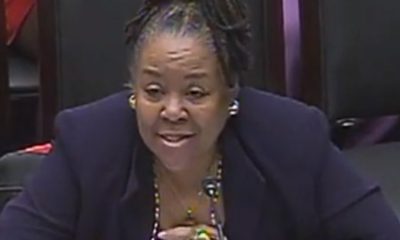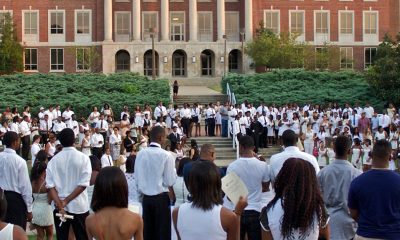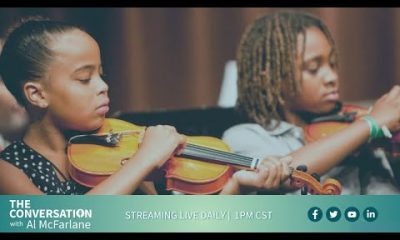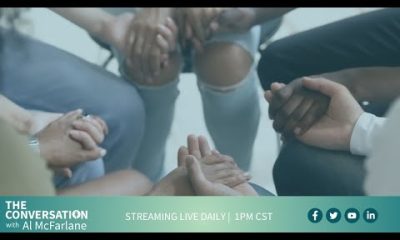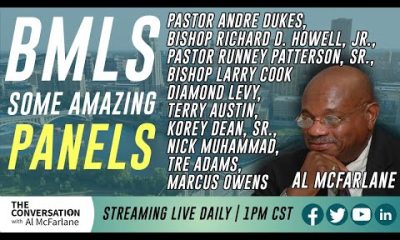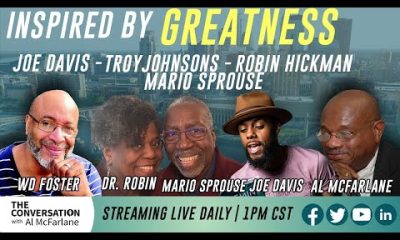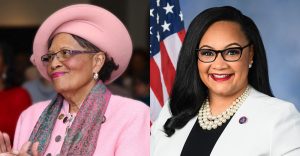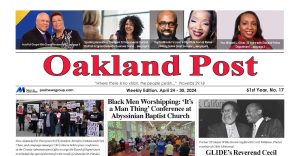#NNPA BlackPress
Death Toll Rises While Outrage Boils Over Conditions at Mississippi’s Parchman Prison
NNPA NEWSWIRE — For some time, concerns about Parchman have rankled inmates, family members, and others, including hip-hop superstar Jay-Z who is suing the state demanding better conditions at the prison. Jay-Z, whose real name is Shawn Carter, and others, have lobbied for officials to shut down the controversial prison. The conditions at Parchman, which once was a plantation that contained hundreds of slaves, were highlighted in January when cell phone video made its way to the internet displaying a cache of problems.
By Stacy M. Brown, NNPA Newswire Senior Correspondent
@StacyBrownMedia
The crisis at Parchman Prison, the former slave plantation where more than two-thirds of inmates are African American, continued with the February 16, 2020 death of David Lee May.
The death was the 18th at the penitentiary since December 29, 2019, and it was the second in 24 hours. Inmate Bobby Vance, 54, died a day earlier from what officials called natural causes.
May, 42, was found unresponsive in his cell and was pronounced dead after prison officials said they said attempts to resuscitate him failed.
“I don’t suspect foul play,” Rankin County, Mississippi, Coroner David Ruth said in a statement about May, who had been housed in a cell by himself. Serving a life sentence for two aggravated assault convictions, May escaped in January but police captured him two days later.
Ruth stated that he’s awaiting results from an autopsy to confirm the cause of May’s death.
For some time, concerns about Parchman have rankled inmates, family members, and others, including hip-hop superstar Jay-Z who is suing the state demanding better conditions at the prison. Jay-Z, whose real name is Shawn Carter, and others, have lobbied for officials to shut down the controversial prison.
The conditions at Parchman, which once was a plantation that contained hundreds of slaves, were highlighted in January when cell phone video made its way to the internet displaying a cache of problems.
Reform advocates and human rights organizations have labeled the prison one of the worst detention facilities in the world.
Reports indicate that death and violence are rampant, many inmates are without beds, and electricity, plumbing, and fundamental human rights are absent. At the same time, mold, roaches, mosquitos, and rodents far outnumber the more than 5,000 inmates.
“This is unacceptable,” rap star T.I., who is among those calling for the prison’s closure, wrote on his Instagram page.
“The conditions in the prisons operated by the Mississippi Department of Corrections are absolutely inhumane and unconstitutional,” Yo Gotti wrote in a letter to the governor Phil Bryant, a Republican.
“To see this happen so close to my hometown of Memphis is truly devastating. That’s why we’re calling on Mississippi state leaders to take immediate action and rectify this issue. If they don’t right this wrong, we’re prepared to take legal action to provide relief for those that are incarcerated and their families,” Gotti stated.
In an alarming 2019 report on Parchman and other Mississippi prisons, The Marshall Project found that gang activity isn’t limited to some of the people incarcerated. They discovered that some prison employees, including some high ranking officers and managers, are affiliated with one of two gangs, the Vice Lords or Gangster Disciples. The reasons vary.
“Some staffers said gang loyalty gives some officers a measure of protection; since gangs have a lot of control, they can prevent certain attacks,” The Marshall Project reported. “Others say gang affiliation began before employment; according to lawsuits, testimony, and interviews, gangs directly recruit women to apply for correctional officer jobs.”
In a tweet, Pro Publica officials stated, “Understaffed and underfunded, Mississippi’s #ParchmanPrison recently received media attention for its grisly violence, gang control, and subhuman living conditions. Lawmakers have known about these issues for years — and have done nothing to fix it.”
In addition to the deaths of May and Vance, James Allen Brown, 54, and Jesus Garcia, 39, have also died this month at Parchman. Each of those deaths was characterized as being of natural causes.
In January, Nora Ducksworth, 53, died of “apparent natural causes” at the prison. Two days earlier, Limarion Reaves, 28, collapsed and died while talking to a relative on a prison phone. On January 26, Joshua Norman, 26, was found hanging in his cell during a security check. One day earlier, Jermaine Tyler, 38, was found unresponsive in his housing unit and, on January 22, Thomas Lee, 49, died of an “apparent suicide.”
James Talley, 36, and Timothy Hudspeth, 35, both died on January 21, due to injuries suffered during an altercation with other inmates.
Authorities said Gabriel Carmen, 31, was found hanging in his cell at Parchman on January 18, while A.D. Mills, 42, died of “natural causes on January 8 after being taken to a local hospital.
On January 3, Denorris Howell, 36, died of neck injuries after an altercation with his cellmate.
Gregory Emary, 26, was reportedly killed in a fight on January 2, while on the same day, Roosevelt Holliman, 32, was stabbed to death in what officials called a gang fight.
Walter Gates, 25, died of multiple stab wounds on January 1, and Terrandance Dobbins, 40, was killed during what authorities called a major disturbance at the prison.
“We have been treating these people like animals for decades,” Paloma Wu, a senior staff attorney with the Southern Poverty Law Center, told reporters after visiting a client at Parchman. “Worse than animals, in fact. It is no exaggeration to say more lives will be lost absent immediate intervention.”
#NNPA BlackPress
IN MEMORIAM: Ramona Edelin, Influential Activist and Education Advocate, Dies at 78
NNPA NEWSWIRE — Born on September 4, 1945, in Los Angeles, California, activist Ramona Edelin’s early years were marked by a commitment to education and social justice. According to her HistoryMakers biography, after graduating from Fisk University with a Bachelor’s degree in 1967, she pursued further studies at the University of East Anglia in England. She earned her master’s degree before completing her Ph.D. at Boston University in 1981.
The post IN MEMORIAM: Ramona Edelin, Influential Activist and Education Advocate, Dies at 78 first appeared on BlackPressUSA.

By Stacy M. Brown, NNPA Newswire Senior National Correspondent
@StacyBrownMedia
Once upon a time, Black Americans were simply known as colored people, or Negroes. That is until Ramona Edelin came along. The activist, renowned for her pivotal roles in advancing civil rights, education reform, and community empowerment, died at her D.C. residence last month at the age of 78. Her death, finally confirmed this week by Barnaby Towns, a communications strategist who collaborated with Dr. Edelin, was attributed to cancer.
Born on September 4, 1945, in Los Angeles, California, Edelin’s early years were marked by a commitment to education and social justice. According to her HistoryMakers biography, after graduating from Fisk University with a Bachelor’s degree in 1967, she pursued further studies at the University of East Anglia in England. She earned her master’s degree before completing her Ph.D. at Boston University in 1981.
Edelin’s contributions to academia and activism were manifold. She was pivotal in popularizing the term “African American” alongside Rev. Jesse L. Jackson in the late 1980s.
Jackson had announced the preference for “African American,” speaking for summit organizers that included Dr. Edelin. “Just as we were called Colored, but were not that, and then Negro, but not that, to be called Black is just as baseless,” he said, adding that “African American” “has cultural integrity” and “puts us in our proper historical context.”
Later, Edelin told Ebony magazine, “Calling ourselves African Americans is the first step in the cultural offensive,” while linking the name change to a “cultural renaissance” in which Black Americans reconnected with their history and heritage.
“Who are we if we don’t acknowledge our motherland?” she asked later. “When a child in a ghetto calls himself African American, immediately he’s international. You’ve taken him from the ghetto and put him on the globe.”
The HistoryMakers bio noted that Edelin’s academic pursuits led her to found and chair the Department of African American Studies at Northeastern University, where she established herself as a leading voice.
Transitioning from academia to advocacy, Edelin joined the National Urban Coalition in 1977, eventually ascending to president and CEO. During her tenure, she spearheaded initiatives such as the “Say Yes to a Youngster’s Future” program, which provided crucial support in math, science, and technology to youth and teachers of color in urban areas. Her biography noted that Edelin’s efforts extended nationwide through partnerships with organizations like the National Science Foundation and the United States Department of Education.
President Bill Clinton recognized Edelin’s expertise by appointing her to the Presidential Board on Historically Black Colleges and Universities in 1998. She also co-founded and served as treasurer of the Black Leadership Forum, solidifying her standing as a respected leader in African American communities.
Beyond her professional achievements, Edelin dedicated herself to numerous boards and committees, including chairing the District of Columbia Educational Goals 2000 Panel and contributing to the Federal Advisory Committee for the Black Community Crusade for Children.
Throughout her life, Edelin received widespread recognition for her contributions. Ebony magazine honored her as one of the 100 Most Influential Black Americans, and she received prestigious awards such as the Southern Christian Leadership Award for Progressive Leadership and the IBM Community Executive Program Award.
The post IN MEMORIAM: Ramona Edelin, Influential Activist and Education Advocate, Dies at 78 first appeared on BlackPressUSA.
#NNPA BlackPress
Tennessee State University Board Disbanded by MAGA Loyalists as Assault on DE&I Continues
NNPA NEWSWIRE — Recent legislative actions in Tennessee, such as repealing police reform measures enacted after the killing of Tyre Nichols, underscore a troubling trend of undermining local control and perpetuating racist agendas. The new law preventing local governments from restricting police officers’ authority disregards community efforts to address systemic issues of police violence and racial profiling.
The post Tennessee State University Board Disbanded by MAGA Loyalists as Assault on DE&I Continues first appeared on BlackPressUSA.
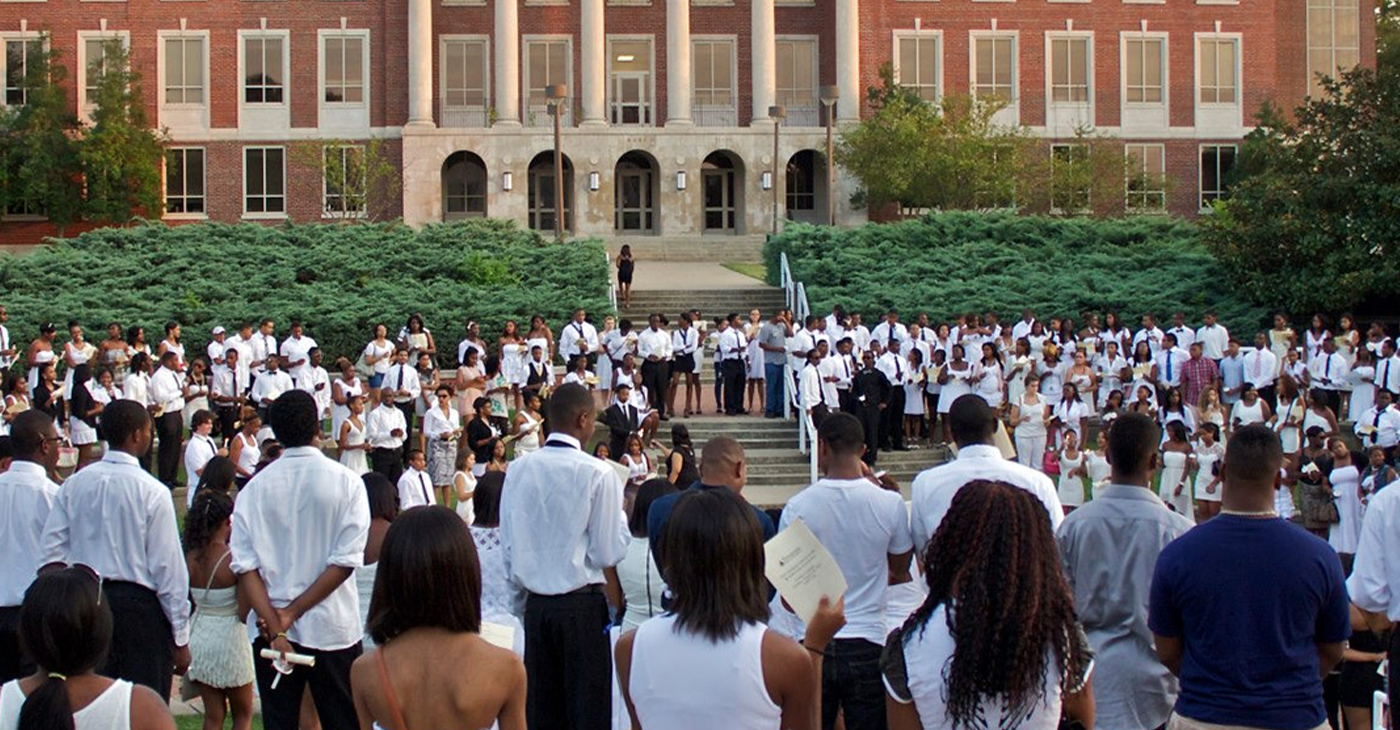
By Stacy M. Brown, NNPA Newswire Senior National Correspondent
@StacyBrownMedia
Tennessee State University (TSU), the state’s only public historically Black college and university (HBCU), faces a tumultuous future as Gov. Bill Lee dissolved its board, a move supported by racist conservatives and MAGA Republicans in the Tennessee General Assembly, who follow the lead of the twice-impeached, four-times indicted, alleged sexual predator former President Donald Trump. Educators and others have denounced the move as an attack on diversity, equity, and inclusion (DE&I) and a grave setback for higher education.
Critics argue that TSU’s purported financial mismanagement is a manufactured crisis rooted in decades of underinvestment by the state government. They’ve noted that it continues a trend by conservatives and the racist MAGA movement to eliminate opportunities for Blacks in education, corporate America, and the public sector.
Gevin Reynolds, a former speechwriter for Vice President Kamala Harris, emphasizes in an op-ed that TSU’s financial difficulties are not the result of university leadership because a recent audit found no evidence of fraud or malfeasance.
Reynolds noted that the disbanding of TSU’s board is not an isolated incident but part of a broader assault on DE&I initiatives nationwide. Ten states, including Tennessee, have enacted laws banning DE&I policies on college campuses, while governors appointing MAGA loyalists to university trustee positions further undermine efforts to promote inclusivity and equality.
Moreover, recent legislative actions in Tennessee, such as repealing police reform measures enacted after the killing of Tyre Nichols, underscore a troubling trend of undermining local control and perpetuating racist agendas. The new law preventing local governments from restricting police officers’ authority disregards community efforts to address systemic issues of police violence and racial profiling.
The actions echo historical efforts to suppress Black progress, reminiscent of the violent backlash against gains made during the Reconstruction era. President Joe Biden warned during an appearance in New York last month that Trump desires to bring the nation back to the 18th and 19th centuries – in other words, to see, among other things, African Americans back in the chains of slavery, women subservient to men without any say over their bodies, and all voting rights restricted to white men.
The parallels are stark, with white supremacist ideologies used to justify attacks on Black institutions and disenfranchise marginalized communities, Reynolds argued.
In response to these challenges, advocates stress the urgency of collective action to defend democracy and combat systemic racism. Understanding that attacks on institutions like TSU are symptomatic of broader threats to democratic norms, they call for increased civic engagement and voting at all levels of government.
The actions of people dedicated to upholding the principles of inclusivity, equity, and justice for all will determine the outcome of the ongoing fight for democracy, Reynolds noted. “We are in a war for our democracy, one whose outcome will be determined by every line on every ballot at every precinct,” he stated.
The post Tennessee State University Board Disbanded by MAGA Loyalists as Assault on DE&I Continues first appeared on BlackPressUSA.
#NNPA BlackPress
Braxton Haulcy and the Expansion of Walker|West Music Academy
May 24, 2023 – Walker West Music Academy gets an early start on expansion. Join us for a Wednesday episode of The …
The post Braxton Haulcy and the Expansion of Walker|West Music Academy first appeared on BlackPressUSA.

May 24, 2023 – Walker West Music Academy gets an early start on expansion. Join us for a Wednesday episode of The …
The post Braxton Haulcy and the Expansion of Walker|West Music Academy first appeared on BlackPressUSA.
-

 Activism4 weeks ago
Activism4 weeks agoOakland Post: Week of March 27 – April 2, 2024
-
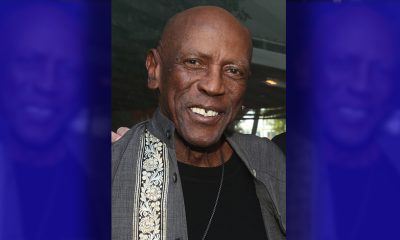
 #NNPA BlackPress4 weeks ago
#NNPA BlackPress4 weeks agoBeloved Actor and Activist Louis Cameron Gossett Jr. Dies at 87
-
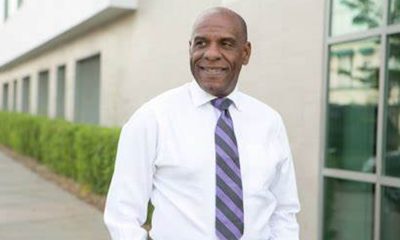
 Community1 week ago
Community1 week agoFinancial Assistance Bill for Descendants of Enslaved Persons to Help Them Purchase, Own, or Maintain a Home
-
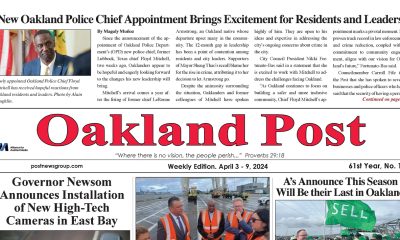
 Activism3 weeks ago
Activism3 weeks agoOakland Post: Week of April 3 – 6, 2024
-
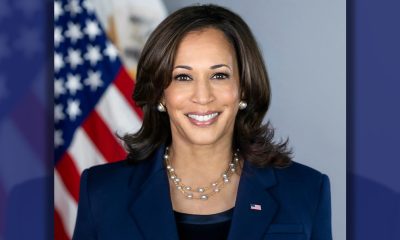
 Business1 week ago
Business1 week agoV.P. Kamala Harris: Americans With Criminal Records Will Soon Be Eligible for SBA Loans
-
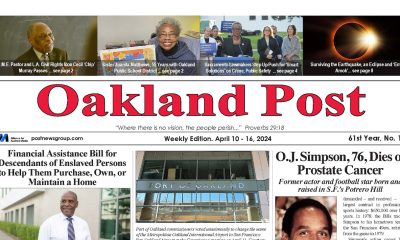
 Activism2 weeks ago
Activism2 weeks agoOakland Post: Week of April 10 – 16, 2024
-
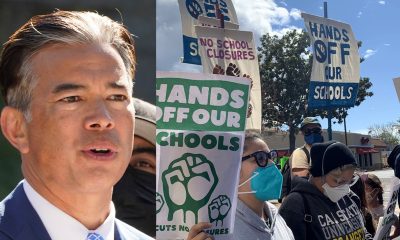
 Community1 week ago
Community1 week agoAG Bonta Says Oakland School Leaders Should Comply with State Laws to Avoid ‘Disparate Harm’ When Closing or Merging Schools
-
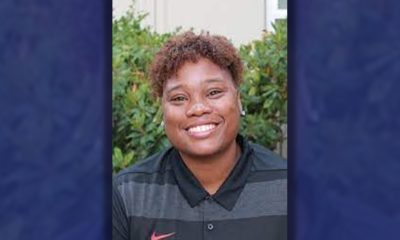
 Community6 days ago
Community6 days agoOakland WNBA Player to be Inducted Into Hall of Fame

